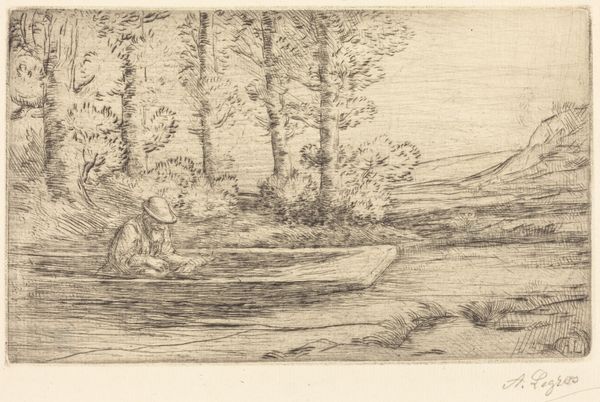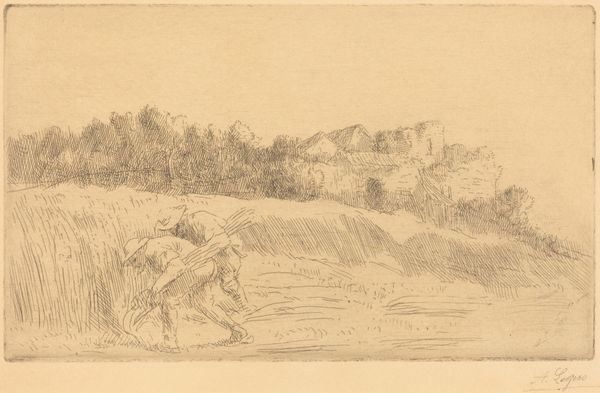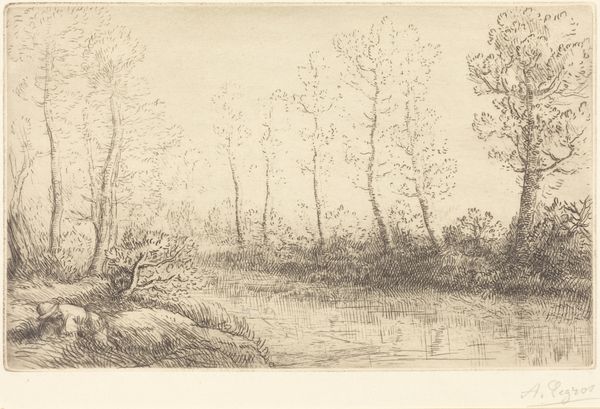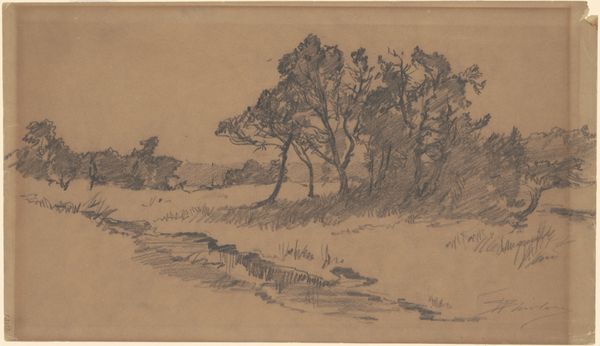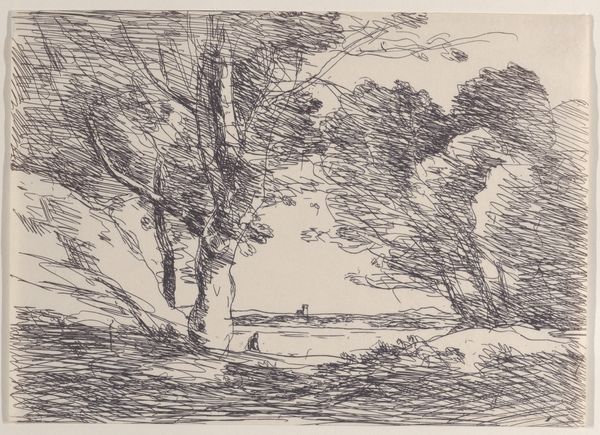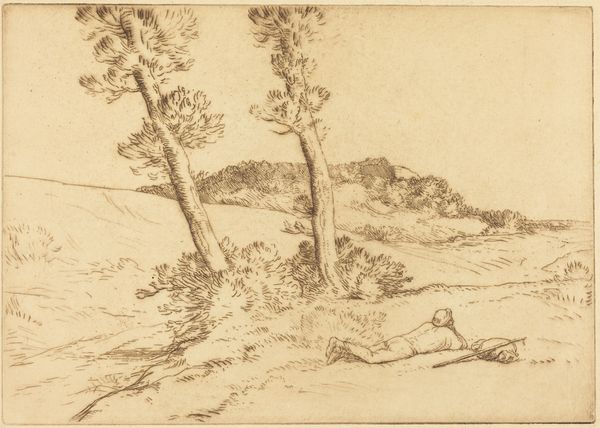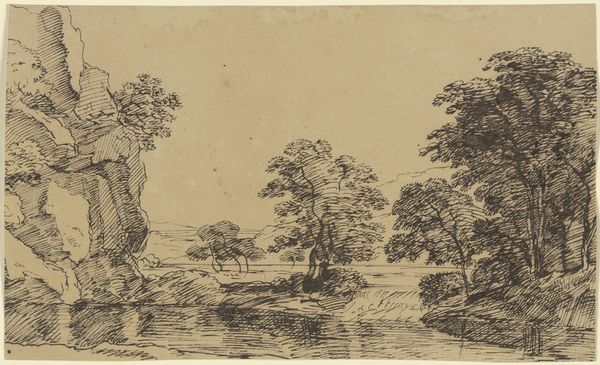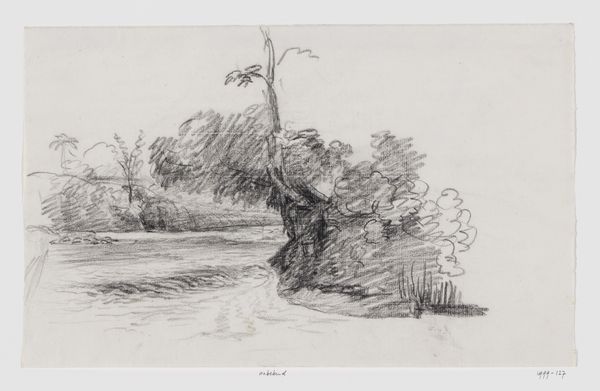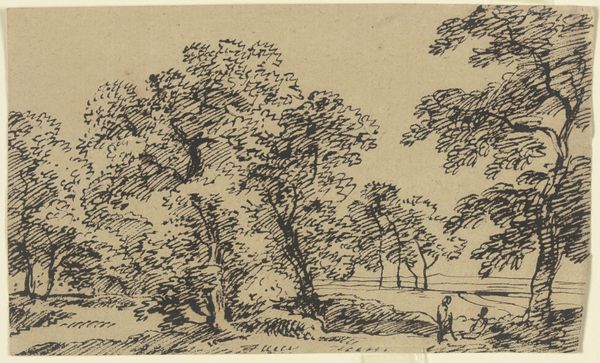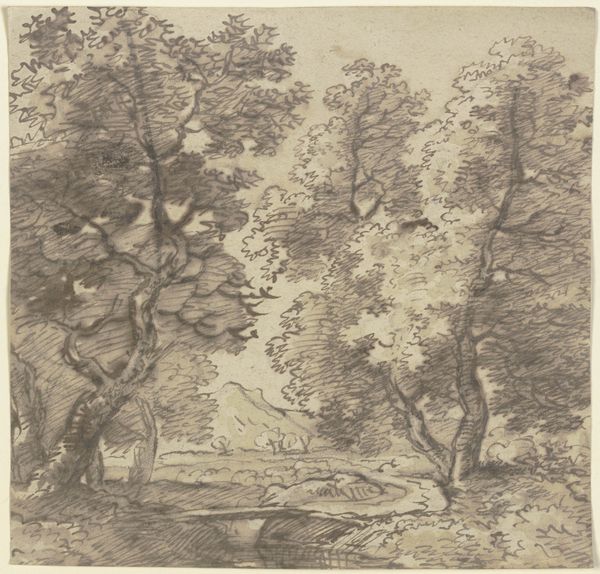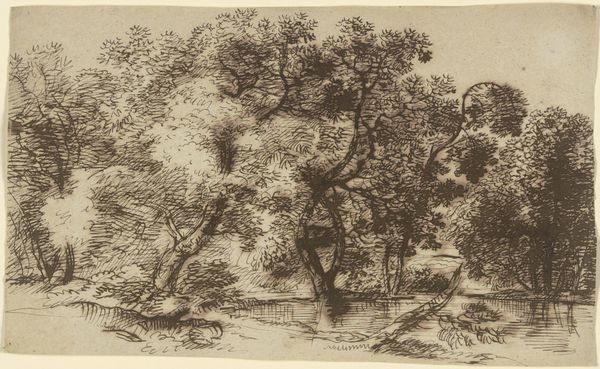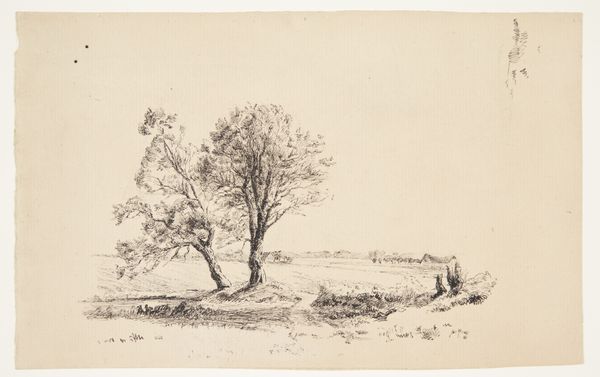
print, etching
#
ink drawing
# print
#
etching
#
landscape
#
genre-painting
#
realism
Copyright: National Gallery of Art: CC0 1.0
Curator: Here we have Alphonse Legros' etching, "Siesta of a Harvester," a quietly powerful print. Editor: Yes, the first impression is definitely one of stillness and repose. The hazy quality created by the etching technique amplifies that sense of midday heat. Curator: Precisely. Note how the artist uses line—dense and almost frantic in the foliage, then relaxed and horizontal in the field to draw us in to the resting figure of the harvester. Editor: I find the placement of the tools fascinating. The scythe almost touching the laborer suggests that both man and implement need this lull to exist. Curator: Good observation. There's a formal tension there as well— the curved scythe contrasting with the figure's straight posture. Beyond that, notice the artist's technique. The fine lines and delicate cross-hatching are very much integral to Legros’ academic background. Editor: But surely it's also about the materiality of labor? We feel the weight of the worker's day and his dependence on the tools surrounding him; consider that, especially because the man becomes indiscernible within his garments and the shading around him. The actual toil that defines him during the day now softens his boundaries as he rests. Curator: Interesting reading. I would push back, suggesting that the soft atmospheric perspective and tonal gradations Legros masterfully manipulates speak more broadly of idealized rustic scenes and human-nature unity—an engagement with pastoral themes. Editor: Even idealized scenes must show how tools shape us and landscapes transform, right? After all, this "siesta" suggests it will take more to work. It will take materials, labor, land, time, sun… The laboring day feels long and demanding because the etching is so precise, detailed, tangible. Curator: It's an invitation to interpret the composition itself. Ultimately, I agree this print gives us space to contemplate form and subject simultaneously, with the formal composition heightening the thematic weight of this timeless, agrarian pause. Editor: Absolutely. Examining how the act of printing renders the worker and his objects almost ethereally helps us respect the daily rituals and toils of the rural world.
Comments
No comments
Be the first to comment and join the conversation on the ultimate creative platform.

